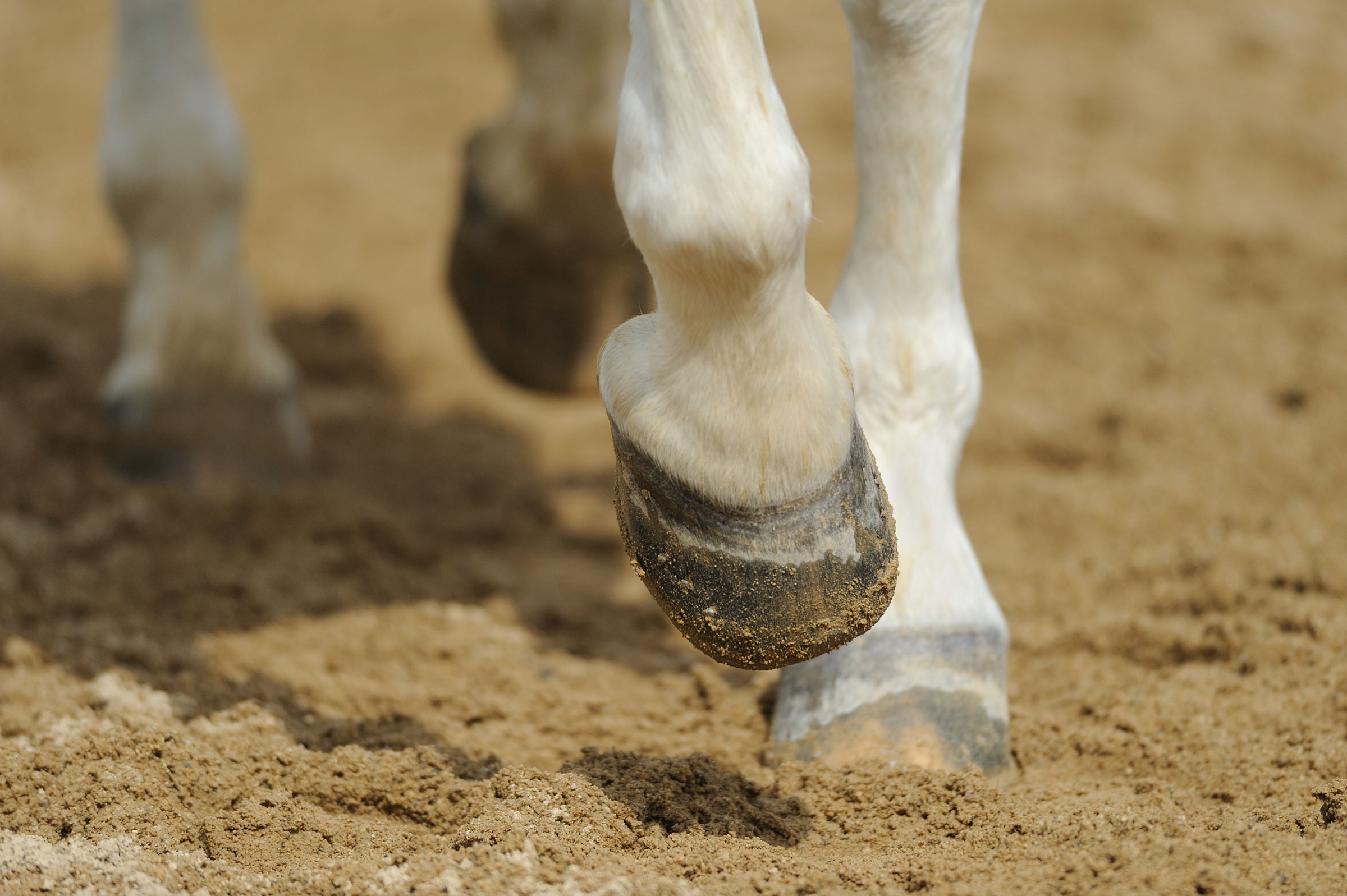
The term “neurectomy” might not be familiar to many in the horse industry, but its common name, “nerving,” certainly is.
Links in articles are part of an Amazon Affiliate program that provides income to support this brand. Links are chosen by our editors.
Nerving is considered a last-resort procedure performed on horses with caudal heel lameness syndrome or navicular syndrome that have not responded to therapeutic shoeing and/or medication. This is temporary procedure that, in most cases, can relieve the horse of pain for two to seven years. It has helped thousands of horses to continue on in their careers without the pain that had plagued them before.
Equine business owners can create an Amazon Business Account.
The Procedure
Horses with good hooves that are not in an advanced stage of navicular are the best candidates for surgery. Often heel soreness is, or eventually will be, bilateral, so usually both feet are nerved. This can be done with the horse standing up, but putting the horse under general anesthesia is usually recommended.
The actual procedure involves severing and removing a two- to four-inch section of both the lateral and medial palmar digital nerves on the back of the pastern. Cutting above that area can cause the horse to lose feeling in the entire foot. Also, all the accessory nerve branches that supply the back half of the foot—which includes the heel, frog, sole, lower laminar and navicular regions—must be removed.
One potential side effect of the neurectomy is the formation of neuromas, a disorganized mass of nerve tissue that occurs at the upper end of the nerve stump. These neuromas can cause the horse more pain than the original navicular syndrome.
In an effort to limit neuromas, the nerve ends might be injected with cortisone three weeks after surgery. Another way surgeons attempt to thwart neuromas is by doing a “capping” procedure. After the nerves are cut, the epineurium, the tissue around the outside of the nerve, is pulled around the end of the nerve, forming a cap.
Sign up now for Amazon Prime 30-day Free Trials, a membership program that offers special benefits including: Instantly watch thousands of movies and TV episodes; Borrow Kindle books; Get unlimited FREE two-day shipping (no minimum order size). Learn more.
Side Effects
The success rate of a neurectomy varies because nerve branching is unpredictable. Approximately 20 percent of horses do not completely respond to the surgery because small ancillary nerve fibers might not be removed. Additionally, after the horse has been nerved, various problems could occur outside of the formation of neuromas, such as tripping. This is seen in about 30 percent of the cases, but it’s uncertain if the stumbling is a result of the neurectomy or the underlying cause that necessitated the surgery in the first place.
Another potential side effect is damage to tendons or ligaments of the involved legs. Because horses feel better, they will begin to move out more, stressing the tendons and ligaments that have not been used as much when the horse was in pain.
Because of this danger, veterinarians recommend bringing the horse back slowly and allowing it ample time to rebuild and strengthen tissues that are now under different mechanical stresses.
Finally, the formation of excessive scar tissue can lead to a decreased blood supply to the hoof, which could lead to laminitis, or, in rare cases, sloughing of the hoof. Following such a procedure, close attention must be paid to the horse’s feet because the horse now can’t feel a bruise, abscess or foreign object in the nerved area. The foot needs to be cleaned and examined daily because thrush can also present a problem.
There is also a risk that the nerves will regenerate within two to five years and the horse will feel pain again. However, it is also believed that feeling returns because the accessory nerves that branch off of the palmar digital trunk increase in activity until they are able to transmit sensations.
Moving Forward
If the recovery is without complications, the horse can go back into light work four weeks after surgery and be brought back slowly. In the past, many believed that following a neurectomy, horses were not to be trusted as school horses or trail horses because of the stumbling. One veterinarian said it can be an issue, but if a trustworthy school horse feels better and is ridden in a consistent terrain, it should be safe to use them.
It is important to evaluate how the horse is doing before you put a client on for a trail ride or lesson.
Sign up now for Amazon Prime 30-day Free Trials, a membership program that offers special benefits including: Instantly watch thousands of movies and TV episodes; Borrow Kindle books; Get unlimited FREE two-day shipping (no minimum order size). Learn more.
When the horse begins to show signs of navicular again, including heel soreness, short, choppy steps in front, tripping and lameness in one or both front feet, he can undergo a second neurectomy, but its effective duration is potentially only half as long as the first procedure. In performing a second neurectomy, the surgeon has to cut higher on the nerve and dissect around scar tissue, which makes the procedure more difficult and unpredictable.
Surgery of any kind is difficult for the horse. But when weighing the pros and cons, remember that neurectomies have helped many horses lead less painful and more productive lives.
Check Out These Books
Trail Riding Arizona
Rails-Trails Washington Oregon
Training on the Trail: Practical Solutions for Trail Riding
Rail-Trails Pennsylvania: The definitive guide to the state’s top multiuse trails
Rail-Trail Hall of Fame: A Selection of America’s Premier Rail-Trails
Kansas Trail Guide: The Best Hiking, Biking, and Riding in the Sunflower State
Tahoe Rim Trail: The Official Guide for Hikers, Mountain Bikers, and Equestrians
Training on the Trail: Practical Solutions for Trail Riding


